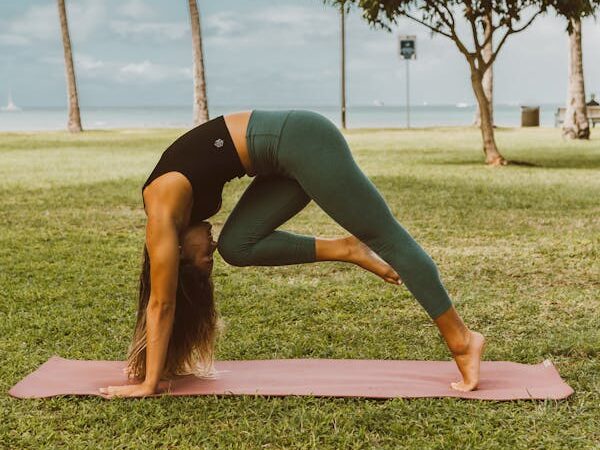How to choose the best Yoga Mat
Yoga mats are the most essential part of yoga practice for both beginners and professionals. Get informed with factors like thickness, material and texture and many more, to enhance your Practice. This blog will help you thoroughly to make an informed choice for an optimal yoga experience.
Choosing a good yoga Mat is very personal decision to make as it depends on your needs , place and preferences. A good yoga mat helps you get the most out of your workout.
If you choose to work on a rug, slippery towel or overly-soft gym cushion, it can lead to injury and frustration. Most studios and gyms offer mats for public use, but owning your own can be a more hygienic alternative.
choosing a yoga mat is depended upon various factors. Understanding the different types of yoga mat that are available in market will drag you to decide which one will be good for you.

1. Material Selection
The material of your yoga mat plays a crucial role in your overall experience. Here are some common materials and their benefits:
- PVC (Polyvinyl Chloride): Known for its durability and excellent grip, PVC mats are a popular choice among yogis. However, they are not eco-friendly and may contain harmful chemicals.
- TPE (Thermoplastic Elastomer): These mats are eco-friendlier than PVC and offer good grip and cushioning. They are lightweight and easy to clean.
- Natural Rubber: If you’re looking for an eco-friendly option, natural rubber mats are great. They offer excellent grip and cushioning but can be heavy and have a strong odor initially.
- Jute: For a natural and eco-friendly option, jute mats provide a unique texture and good grip. They are often combined with PER (Polymer Environmental Resin) for added durability.
- Cotton or Hemp: These mats are breathable and absorbent, making them ideal for hot yoga. They are also eco-friendly but may not offer as much cushioning as other materials.
2. Thickness and Cushioning
The thickness of your yoga mat affects both your comfort and stability during practice. Here’s a quick guide to thickness options:
- 1/16 inch (1.5 mm): Thin mats provide a strong connection to the floor, making them ideal for balance poses. They are also lightweight and easy to carry.
- 1/8 inch (3 mm): Standard mats that offer a balance of cushioning and stability. Suitable for most types of yoga.
- 1/4 inch (6 mm): Thicker mats provide more cushioning, making them ideal for restorative or therapeutic yoga. However, they may be less stable for standing poses.
- 1/2 inch (12 mm) or more: Extra-thick mats are great for those who need additional support for their joints, but they can be bulky and heavy to carry.
3. Texture and Grip
The texture of your yoga mat affects your grip and how much you slip during practice. A good grip is essential to prevent injuries and maintain stability in your poses.
- Smooth Mats: Offer a softer feel but can be slippery, especially when you sweat. Ideal for those who prefer a minimalist texture.
- Textured Mats: Provide a more tactile grip, which can help prevent slipping. Ideal for vigorous styles of yoga like Ashtanga or Vinyasa.
4. Portability
If you plan to carry your mat to classes or travel with it, consider the weight and portability. Lightweight mats are easier to carry, while heavier mats may provide more cushioning and durability.
5. Durability
The durability of your yoga mat is crucial, especially if you practice frequently. High-quality materials like PVC and natural rubber tend to last longer. Check reviews and product descriptions to gauge the mat’s longevity.
6. Eco-Friendliness
For environmentally conscious yogis, choosing a mat made from sustainable materials is important. Look for mats made from natural rubber, jute, cotton, or TPE. Avoid mats made from PVC if eco-friendliness is a priority.
Variety of such yoga mats are available in the market with low to high price range. You can go through the cart of amazon India through this link for environment friendly mats. Ecofriendly yoga Mats.
7. Price
Yoga mats come in a wide range of prices. While it’s tempting to go for the cheapest option, investing in a high-quality mat can enhance your practice and last longer. Consider your budget but prioritize quality and suitability for your needs.
8. Design and Aesthetics
While not as crucial as other factors, the design and color of your mat can make a difference in your practice. Choose a mat that inspires and motivates you to practice regularly.
Conclusion
Choosing the right yoga mat is a personal decision that depends on your individual needs and preferences. By considering the material, thickness, texture, portability, durability, eco-friendliness, price, and design, you can find the perfect mat that enhances your yoga practice. Remember, the best mat for you is the one that supports and encourages your journey towards better health and well-being.
How to lose weight with yoga
Hello, everyone! I hope you’re all enjoying life to the fullest! Today, I want to…
A comprehensive guide to chakra yoga
In a world where stress and distraction seem ever-present, finding balance and inner peace can…
Topmost Myths about yoga
Yoga now a days is being followed worldwide. Hence more of a myths about yoga…
Best guide for Yoga Accessories
Buying Yoga Accessories is confusing for those who are new to yoga. Yoga Accessory market…
How to choose the best Yoga Mat
Yoga mats are the most essential part of yoga practice for both beginners and professionals….
A Guide to start Yoga- A powerful way to unlock your Energy
Start yoga, This is the ultimate solution if you are thinking to do something for…